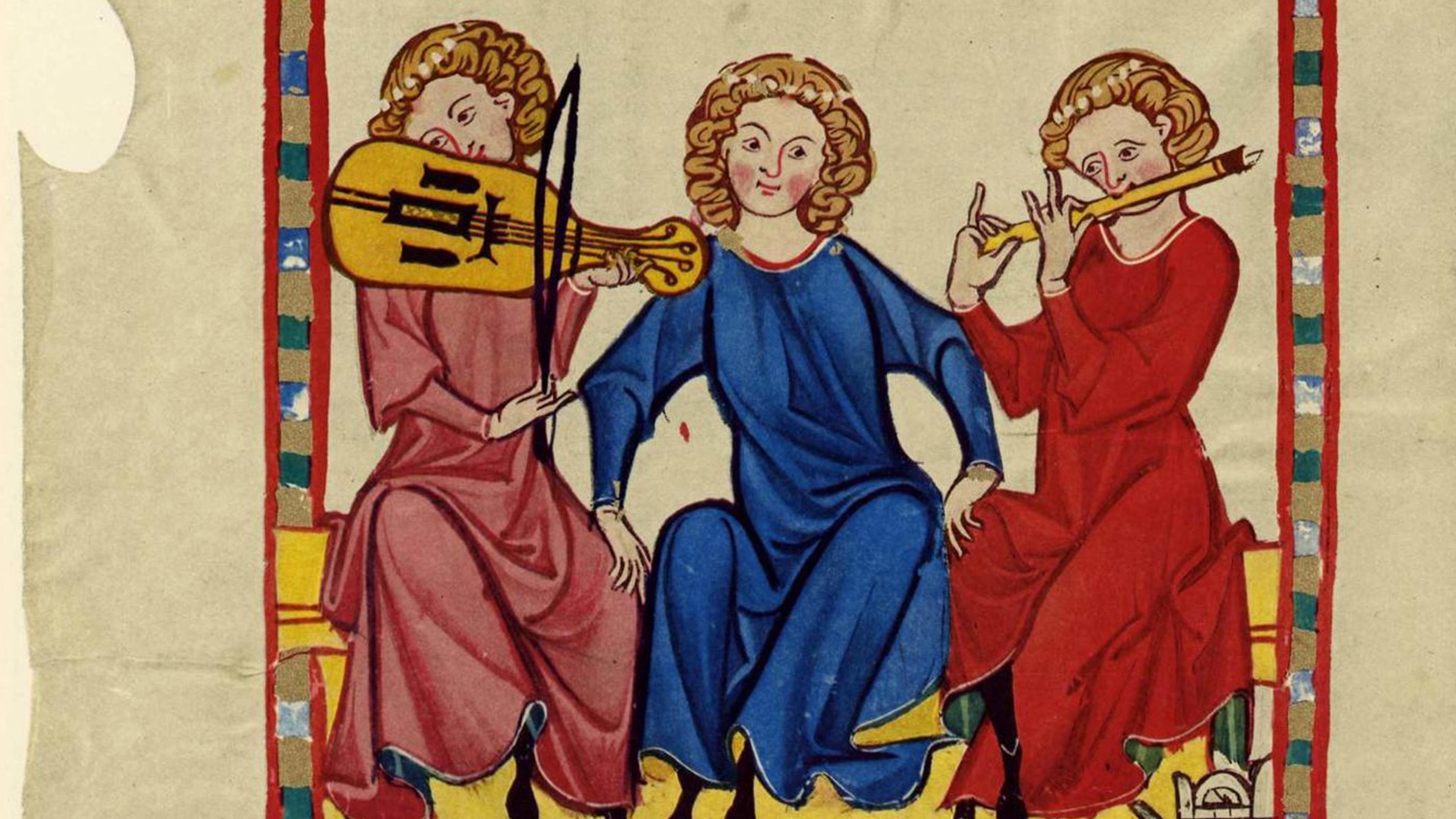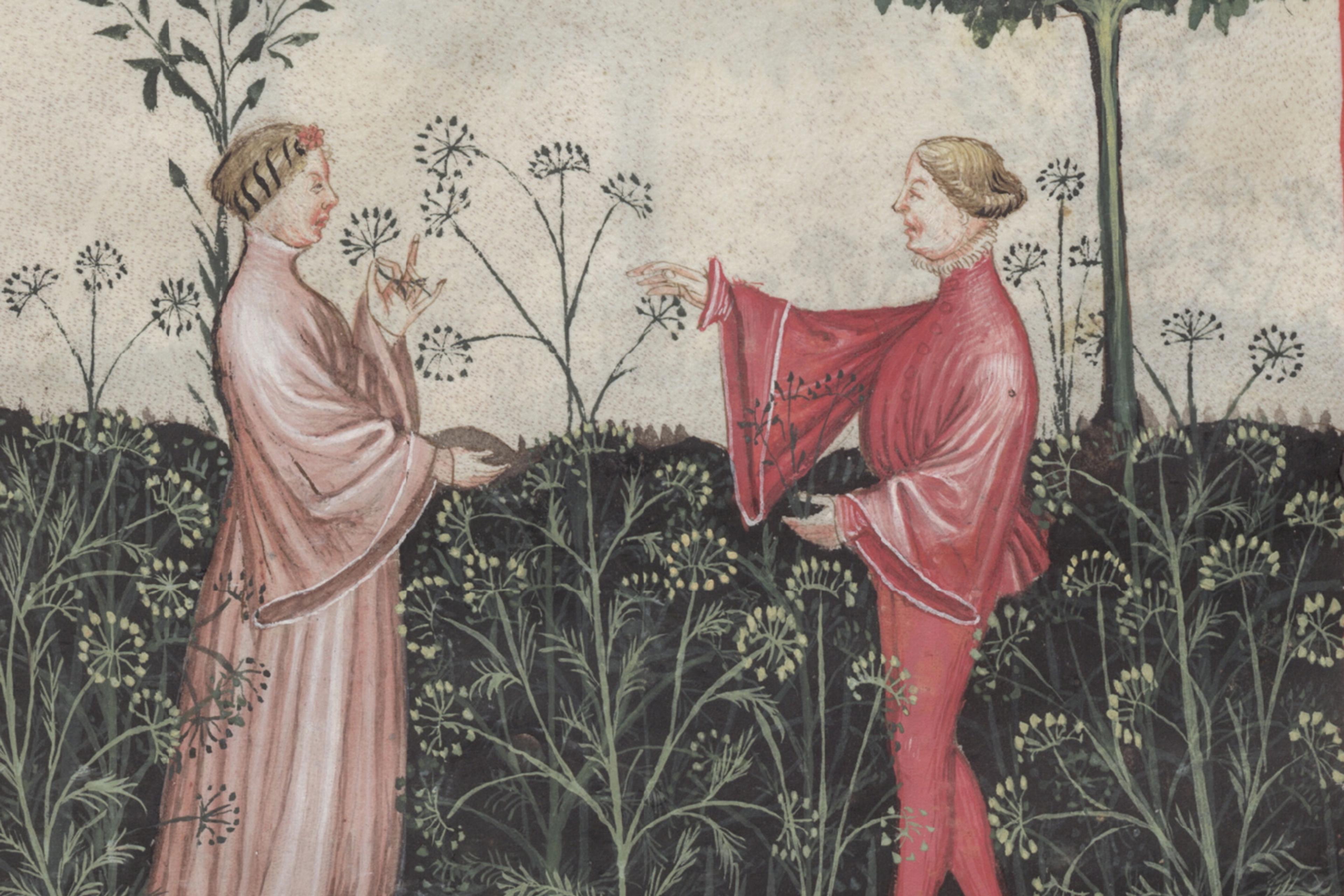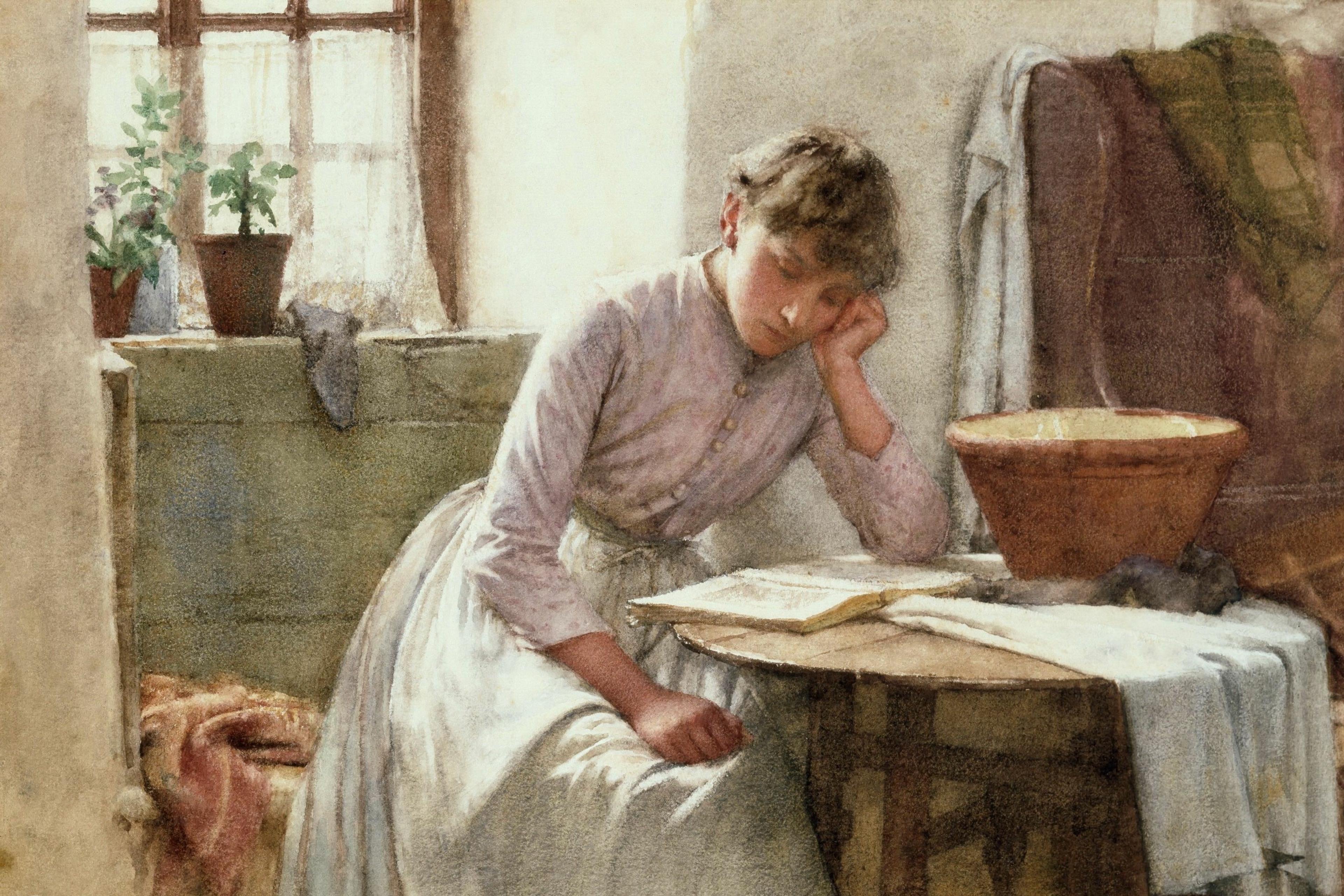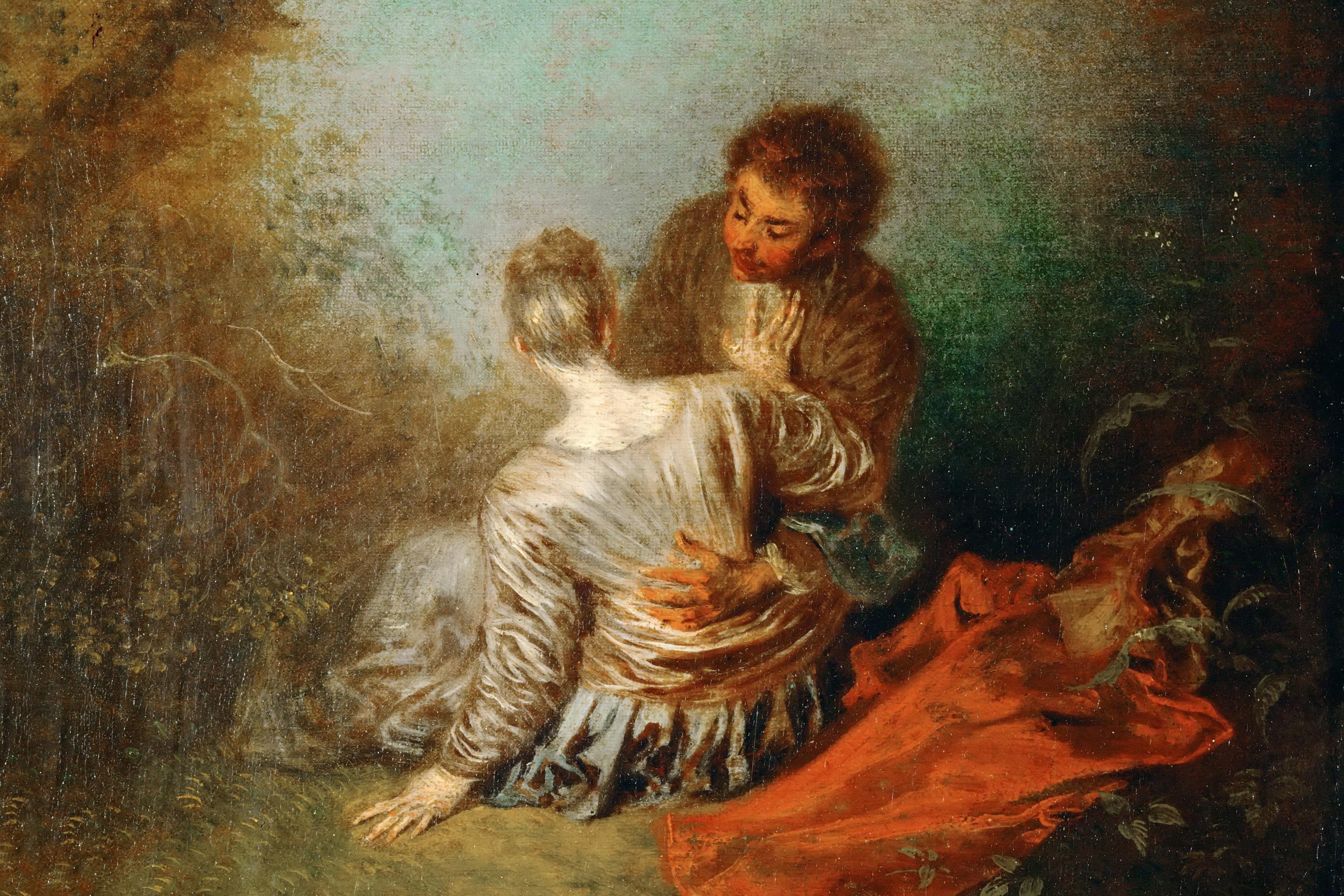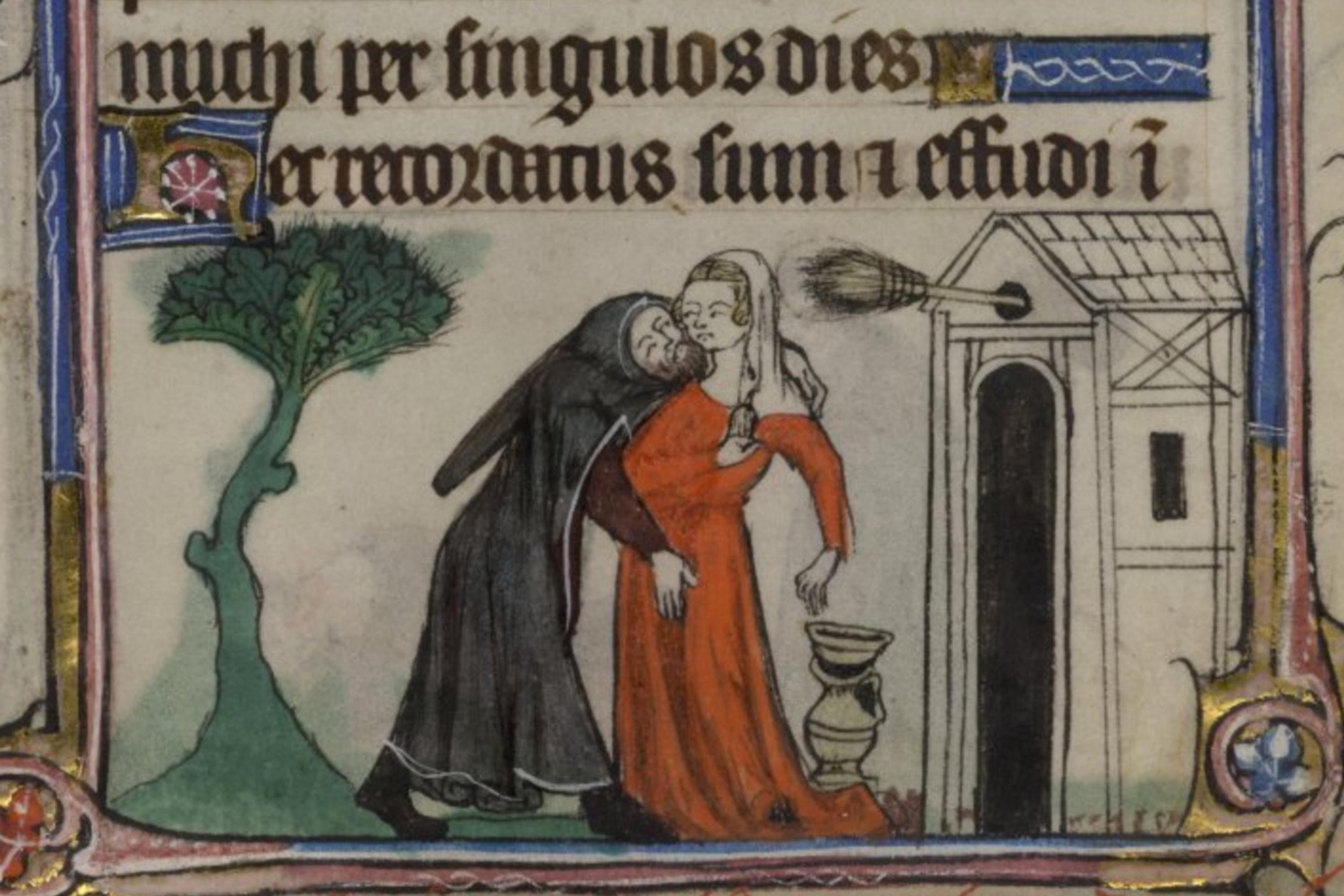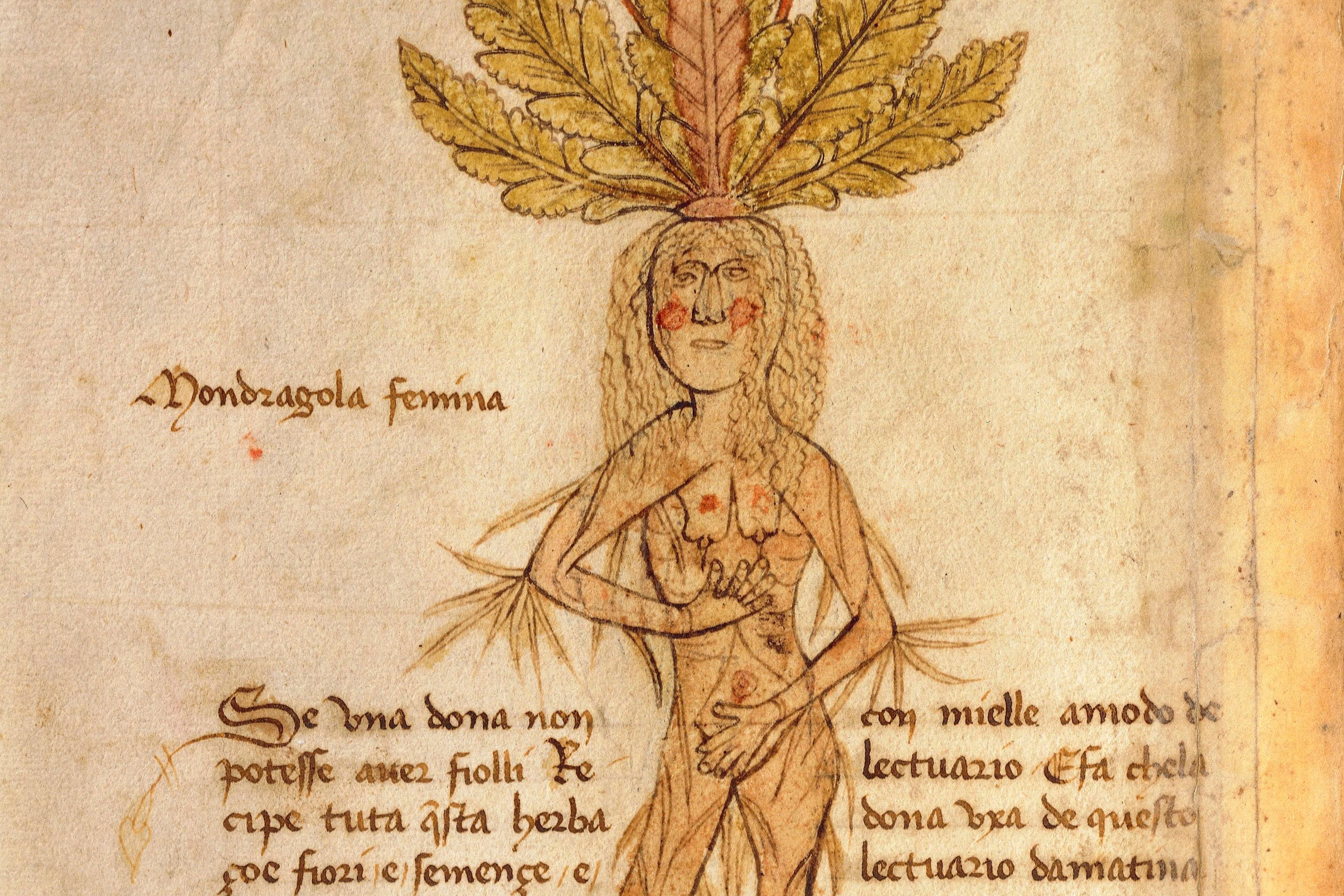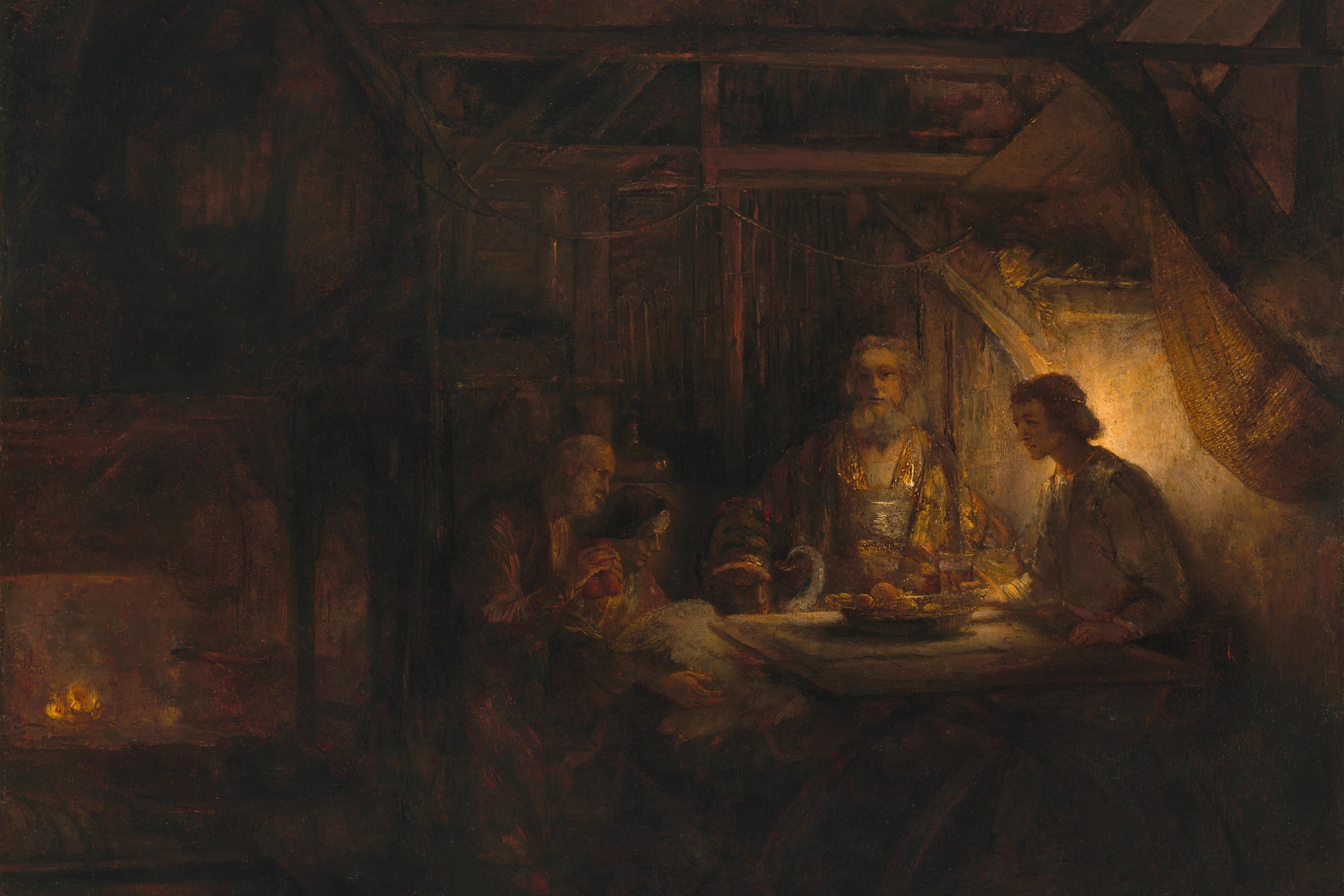From long habit and from practice, I love where I am not loved back, and I sing like a lover who dare not complain, although I have much sorrow from my happiness. I must not weaken at all on account of bearing this sweet burden. Oh God! don’t let me ever cease a single day from loyally loving!
The love doctrine of high-register medieval literary texts such as this song by the French poet-composer and nobleman Blondel de Nesle is typically referred to as ‘courtly love’. This is an English translation of a 19th-century French coinage (‘amour courtois’), used to designate what appeared to be a new species of erotic relations in Arthurian legends from the 12th century. This love is courtly because it is refined, often unrequited, even religiously transcendent – the lover says things like: ‘I am in love with the best lady that eyes ever saw.’ The (usually) male lover praises or even worships his female beloved, who is stereotypically beautiful and good, but oblivious, aloof or disdaining. Reduced to loving steadfastly and honourably from afar, the lover masochistically enjoys the pain of unrequited love because it is the only thing he can get from his lady: ‘But this pain pleases and agrees with me so much … [that] it is worth more for me than if I were loved by another – never has anyone felt such a pleasant pain!’ When the lover asks his ‘Sweet noble lady’ how he can keep silent ‘when this sweet sickness grips me and no relief comes from you,’ this pain makes him sing.
The Middle Ages produced a lot of love songs. Hundreds of songs by named poet-composers – the so-called troubadours – survive from the late 11th to the early 14th century, as well as similar numbers by their counterparts working in the north of France (the ‘trouvères’) for whom we also have many more surviving tunes, enabling the songs to be performed today, even if we don’t know exactly how they would have sounded or who would have been involved in their performance.
Despite their apparently rather stereotypical sameness, courtly love songs remained central to the practice of music at court over a relatively long period of time. Clearly, they worked for their listeners. But what work did these songs do? And what can this tell us about the relationship between the artistic production of poems and songs, and the real lives of the people for whom this production was designed? Can they tell us anything about listeners’ emotional, intimate, sexual lives, something for which there is otherwise little direct evidence?
In a recent study, I described these songs as a kind of sexual script or pedagogy – a way that listeners learned social expectations about erotic intimacy while also being presented with certain fantasy pathways along which to explore their own interior desires, either alone or with their spouse. I say ‘spouse’ because the listeners for these songs were mainly courtiers, that is, nobles found in aristocratic courts throughout Western Europe in this period. Extramarital sex was undoubtedly a thing (as legal cases prove), especially for certain classes of people (for example, clerics and their ‘concubines’, once priestly marriage was forbidden). But for nobles – especially for the women – legitimate sexual expression lay solely within arranged dynastic marriage. Moreover, women might have to move anywhere across Europe to wed a spouse they had never met and undertake marital sexual relations to produce aristocratic heirs. Songs provided a shared set of erotic fantasies that smoothed the experience of many an arranged marriage in a cultural context where the conception of offspring was usually believed to depend on mutual pleasure.
The shared set of understandings created by courtly love songs was aided by two factors. First, their lyrics were in French, the common language in Western Europe in this period, at least for artistic products consumed by aristocratic laypeople. Second, the extensive but quite generic set of ideas of love in courtly love songs formed an amorous ‘script’ that helped listeners know romantically what to expect. This in turn might have provided a marital aid to pleasure in sexual activity, whether these scripts were shared between the couple or were the private personal fantasy of one member.
But it gets weirder once we look more closely. What to make of the lover who thanks the god of love for the ‘charming present’ of a lady with only a single tooth? Or the lover who enjoys his lady scaring him by throwing her distaff down and ordering him to pick it up for her? Or the praise of wrinkles, ‘chapped mouth’, a ‘murky smell’ beneath her shirt? Or the lady who ‘often makes me a present of such a sigh that it would be worth a belch and a half in exchange’? Then there’s a lover obsessing about what shoes will best turn on his lady, or the ‘lady’ described in ways that makes it clear that she is really a cow that the lover desires. How should we interpret the song about the lover who wants his lady to ‘suck out his buttocks’ or scratches himself raw thinking of his lady’s bad haircut and offers – because she loves to spin day and night – to give her a taste of the large tip of his ‘spindle’. Clearly these couples are getting off on something very different from the lovers quoted earlier.
Scandalised scholars carefully separated these often-scatological offerings from more refined courtly love
While the rather vanilla type of ‘courtly’ love songs that gave the genre its modern name are in the majority, they are often, in fact, a product of their prudish 19th- and 20th-century editors. Earlier scholars had extracted these courtly love songs (and similar verse narratives, like the Arthurian legends) as a suitable subject for study from much more eclectic collections of songs. It was these scholars – and not people in the Middle Ages – who were idealistic about love and squeamish about sex.
It turns out that high-style, lady-on-a-pedestal love songs were often found in the same medieval books as songs with dialogue, songs with a scenario culminating in sex or rape, debate songs asking, for instance, whether you’d rather meet your lady’s other lover leaving as you’re arriving or vice versa, and ‘silly songs’ praising the beloved’s shit, bad breath, wrinkles and farts. These songs range well outside what has usually been defined as ‘courtly’ in the sense of being proper or decorous (the ‘courtly’ in ‘courtly love songs’ refers to the court itself, not courtliness or courtesy). In making modern editions, scandalised scholars carefully separated these often-scatological offerings from more refined courtly love, dismissing them as poor attempts at comedy. Once we accept that aristocrats were actually consuming all these things together, a new perspective on medieval songs as ‘sexual scripts’ allows for an even fuller sense of medieval sex lives.
The idea of sexual scripting works well for historical study because, as a socially constructed approach, it makes no assumption of any a priori transhistorical and/or transcultural conception of sexuality or sexual expression. ‘Sexual scripting’ is a sociological theory that has mainly been applied to contemporary society since the early 1970s, and was designed as a reaction against the norms and assumptions of the kind of ‘sexual science’ that had dominated earlier research into sex. It rejects the premise that sex is a powerful natural force or drive, preferring to see it as fundamentally socially constructed, thus understanding it from a perspective that is neither biological nor psychological.
Sexual scripting posits three overlapping, interacting and sometimes conflicting levels: intrapsychic, interpersonal and cultural. The intrapsychic is the domain of individual fantasy; the interpersonal is that which plays out between individuals; and the cultural is a more communal, social set of expectations and norms. Medieval love songs are representative of widespread and long-lived cultural scripts for sexuality that could have elicited certain kinds of response in interpersonal and intrapsychic settings. They point to the sorts of values, judgments and imaginative possibilities that could be attached to sexual behaviour.
Courtly love songs give a symbolic space for playful fantasy without serious consequences
But why might songs in particular have been such a durably useful way of disseminating sexual scripts? Melodies help us remember their texts – the most memorable parts of songs tend to bring words, contexts and attendant emotions along with them. The most memorable part of lots of medieval song forms was something called a refrain. In the Middle Ages, the refrain came in two different varieties – a familiar form in which text and music are repeated within a single song (like a modern pop-song chorus), and a less familiar, more specifically medieval type. This latter type was typically a kind of earworm: a very short catchy melody that could easily be sung on repeat by untrained singers or could be integrated into longer songs performed by court musicians. The text was usually in the first person and often voiced a short, highly emotional exclamation that is readily understandable out of context (‘Oh! Oh! Oh! I feel the pain of love in my heart’ or ‘I’m off to have fun in the greenwood, my love is there, and I shall awaken her.’)
Refrains were typically learned in social settings with other courtiers but were very apt for use in more private settings. Sung by a courtier as part of an after-dinner game, a refrain might mark informal play as performative, but it might also serve as a useful point of entry for recalling longer lyrics that offer more complex sexual scripts. In a social setting, these are shared scripts on the cultural level of sexual scripting. Between two people in their private chamber, they might work to assist harmonious interactions. In a situation where the interpersonal use of shared cultural scripts failed, such as when the other person refuses to play the same (sexual or cultural) game, the potential sexual utility of courtly song was not necessarily exhausted. Mental rehearsal, important for choosing among potential behaviours, forms the intrapsychic level of sexual scripting, which is the internal individual experience. Music’s ability to live in memory, indeed the strong connection of melody to memory, likely enabled aristocrats to employ songs intrapsychically so as to make use of the manifold possibilities in the cultural script through imaginative recall and fantasy. Courtly love songs thus give a symbolic space for playful fantasy in a community in which real-life extramarital sexual behaviour would have had serious consequences.
And this brings us back to the edgier types of songs that lie alongside the more refined ones in the medieval sources. If we understand medieval songs – in all their variety – as potential sexual scripts, they open up the possibility of things that today might be identified as specific paraphilias: coprophilia (faeces), trichophilia (hair), mysophilia (dirt), olfactophilia (smells), or the ‘edge play’ of rape scenes. Such scenes and practices may be more familiar from today’s BDSM community, but there seems to be no reason to imagine that similar sexual minorities were not present in the past. So, while the majority of listeners may well have laughed or found such songs distasteful, certain others will have had their particular imaginations ignited with sexual possibility.
